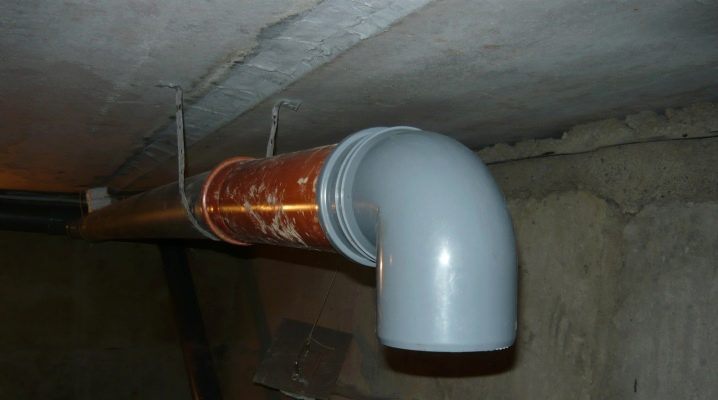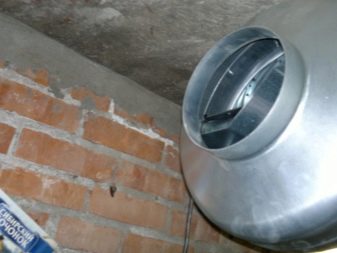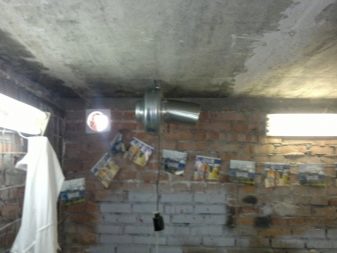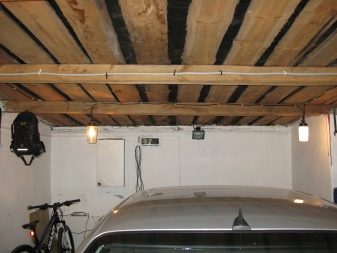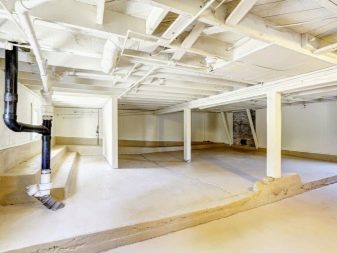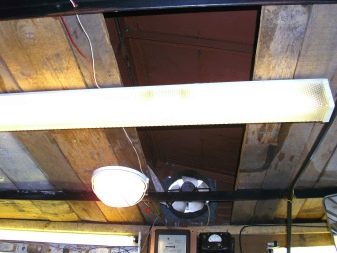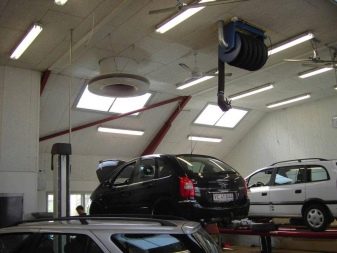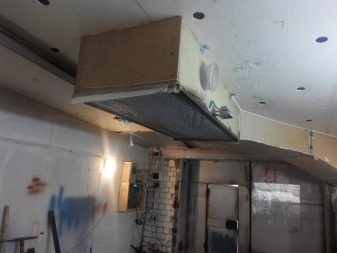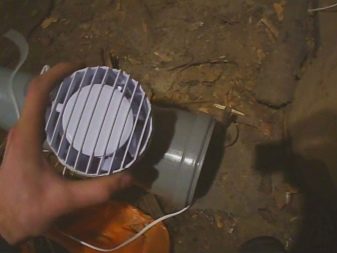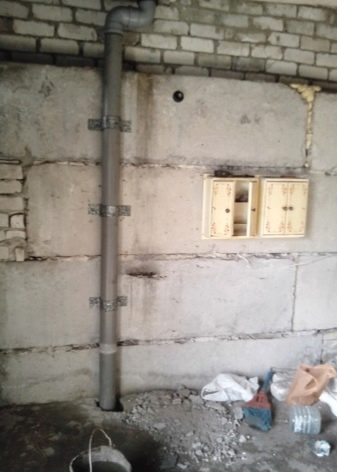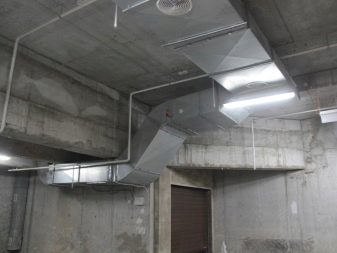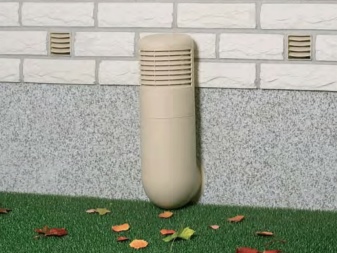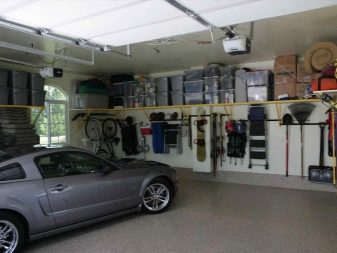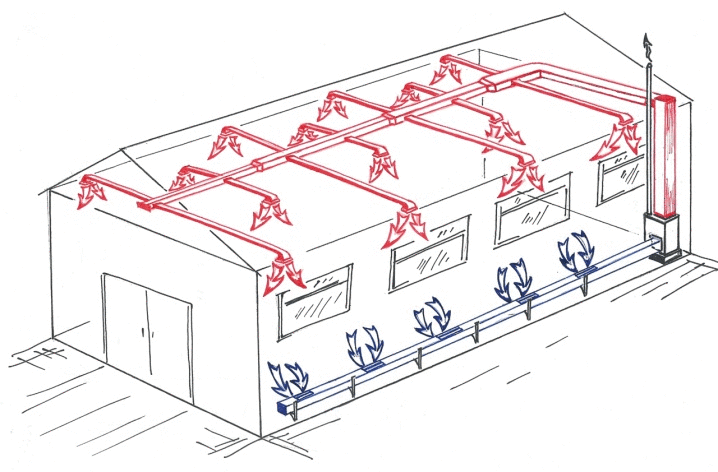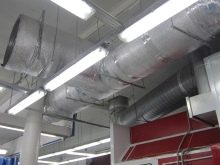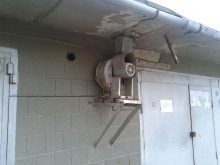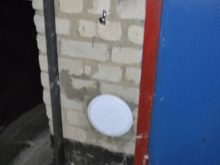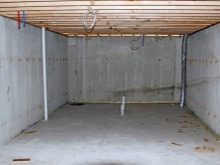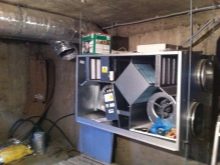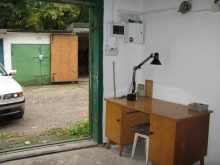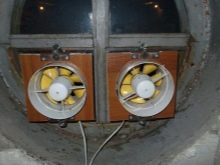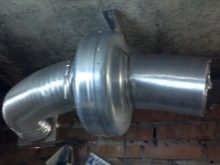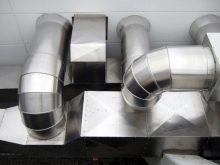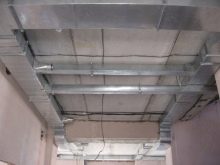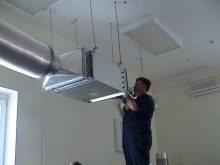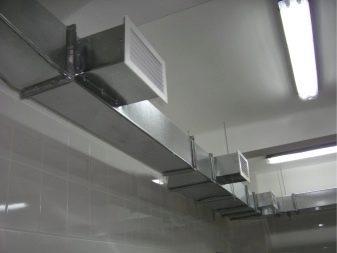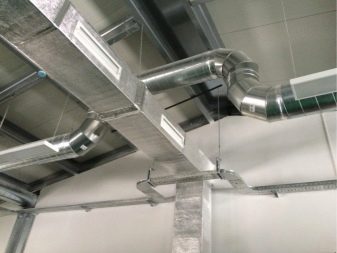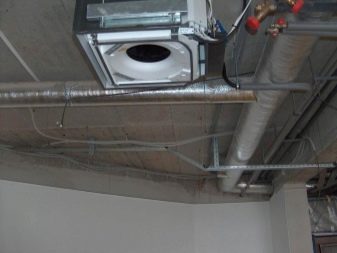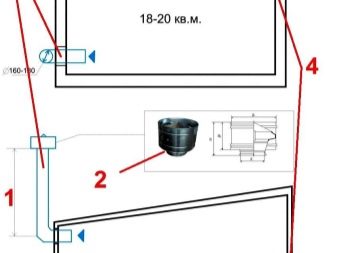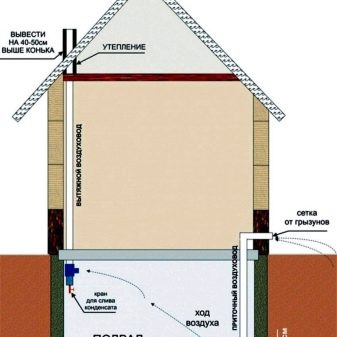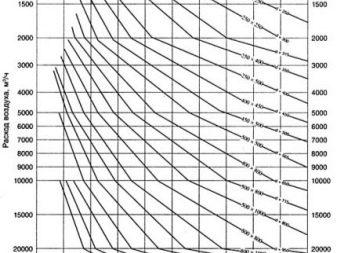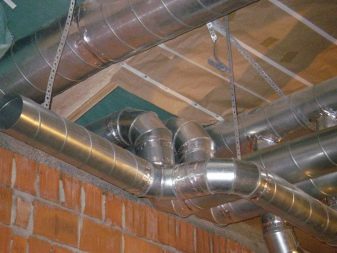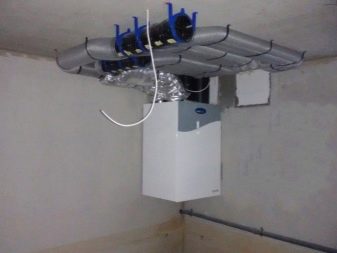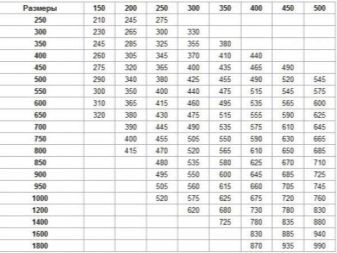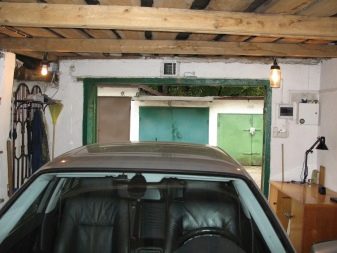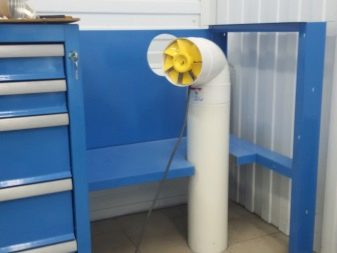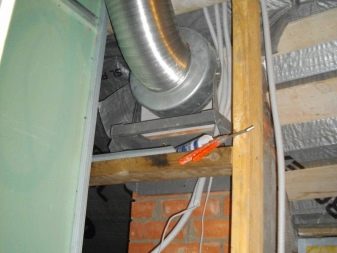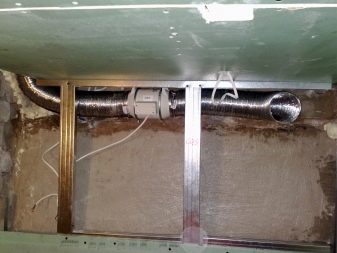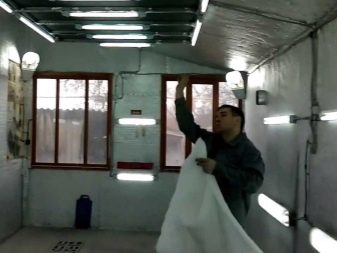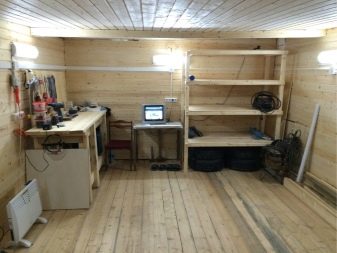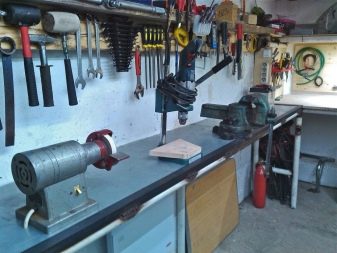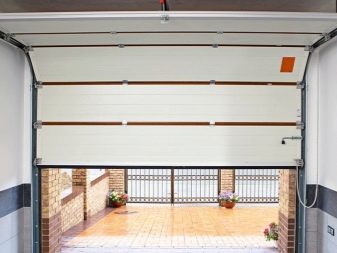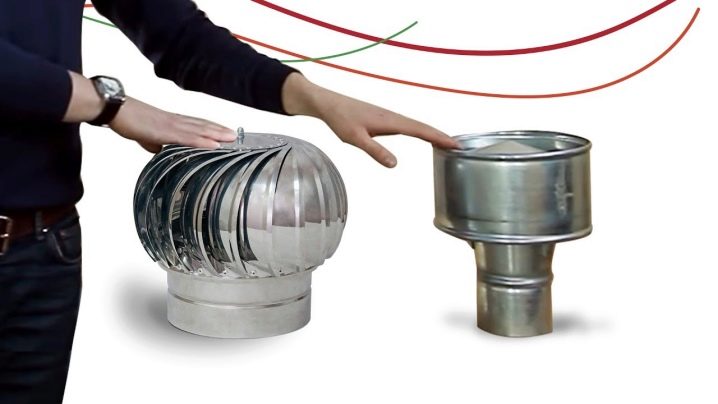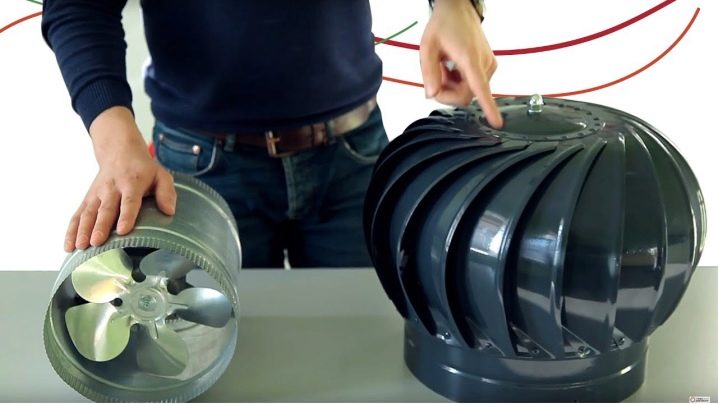Ventilation in the garage: the details of the device
Ventilation in the garage performs one of the most important functions - it provides a healthy microclimate and helps to keep the car in optimum condition. How to equip yourself with the supply and exhaust hood in the cellar or in the basement and make ventilation holes? Answers to these and other questions will be found below.
Special features
The garage is a closed space that requires effective ventilation for complete and timely removal of condensable moisture, toxic exhaust gases, and other harmful fumes.
These are some of the functions that a properly organized ventilation system should perform.
- Remove moisture, which inevitably falls inside the garage with tires and the bottom of the car, because drying the car is almost the only way to prolong its operation.
- To remove hazardous to human health exhaust gases, chemical fumes of oils, varnishes, gasoline or diesel, car care products that are often stored in the garage.
- Prevent condensation on the walls and ceiling of the garage, as well as inside the cellar, which can lead to damage and even destruction of the garage itself.
- Responsible for the rapid removal of moisture from the surfaces of the car, which will prevent the appearance of rust.
- Protect from corrosion not only the car itself, but also tools that are often stored right there.
Kinds
There are only two principles of ventilation of the garage - natural and forced. From here you can naturally deduce the types: natural, mechanical and combined.
Natural ventilation based on aerodynamic laws. and the use of mechanical devices does not imply that air flows naturally, obeying the laws of physics, through the supply and exhaust openings in the walls or garage doors due to the difference in temperature inside and outside the box. This type of ventilation is easy to design with your own hands.
Of course, in any garage, the air temperature inside the box will be higher than the ambient temperature in the warm season.And this circumstance is used to stimulate air circulation: physically warm air tends upward, and cold - downward due to the difference in temperature and density.
Accordingly, two improvised ventilation ducts are made in the walls of the garage. It is recommended to place them diagonally. Outside air enters the inflow port. At this point, a temperature difference arises in the garage box and warm air rises, then falling into the exhaust air duct and moving away.
The basic principles of the placement of the system.
- The supply air duct is usually placed on the windward side and as close as possible to the floor level - usually not higher than 10-15 cm, but not less than half a meter from the surface. The simplest and most effective solution for this type of ventilation is standard ventilation grids that simply cut into the garage door.
- The hood must be arranged at a distance of 10-15 cm below the junction of the wall with the ceiling. It is installed 10 cm below the ceiling joint, the other end of the duct is located outside the box at a level of about half a meter below the edge of the roof.
- It is important to observe the placement of the supply and exhaust openings in different corners of the room opposite each other with a difference in height of at least 2.5-3 meters.
- If the ventilation duct is released onto the roof of the box, do not forget to ensure the height of the pipe is 50-60 cm. As a rule, it is covered with a figured lid on top and equipped with a grid or grille to protect against insects.
In addition to the simplicity of the equipment of the natural ventilation system and the low cost of it, it also has drawbacks.
- In the warm season, a small temperature difference makes this type of ventilation ineffective - there is not enough mixing of air masses, including due to the different density of air.
- An important role is played by the location of the ventilation openings for inflow and exhaust.
- Another disadvantage is the appearance of ice on the open parts of the system in the cold season due to too much lower temperatures inside the garage box. This problem is easily eliminated by the installation of insulated shut-off valves.
The artificial (forced) type of ventilation is characterized by ensuring the mixing of air masses with the help of exhaust and intake fans and mechanisms similar to them. Air mixing in the garage box takes place with the help of artificial supply and exhaust systems.It can be said that to some extent this type can even replace heating. The most advanced systems use a variety of software.
Structurally, this type of ventilation is distinguished on a monoblock. (a single unit provides both a fence and a hood) and modular (all of the above is done by two different blocks of devices).
This kind of relatively expensive because it requires a certain degree of mechanization. It will take at least two types of devices - for the organization of air flow and its exhaust.
Supply equipment may include a heater or fan heater, you can also add an air filter or duct fan.
The intake air passes through the filter, is heated by the air heater and enters the air ducts. After performing its functions inside the box, air masses are emitted into the atmosphere through an exhaust system.
It is possible to mount a single-block version. It may even be more efficient, since all the equipment is enclosed in a single case and functions as a whole. In addition, it is the most economical in operation, since usually the plate heat exchanger works “by itself”, heating the air drawn in from the atmosphere.
The advantages of the mechanical type of ventilation:
- mechanical type of ventilation system provides internal humidity and air temperature, regardless of atmospheric conditions outside the garage block;
- with its help it is easy to ensure the ventilation of the basement, to create proper air circulation;
- if you have a garage box that is completely below ground level, this is the only way out for this type of garage when storing a car.
The combined type of ventilation operates according to a separate principle - the air enters the box independently, and is ejected by means of mechanical devices.
If the ambient temperature is higher than the internal one and the natural type of ventilation is implemented (without the use of mechanisms), the design does not function. Stimulate the mixing of air in this case, you can install conventional fans. They are economical in operation and not very burden the family budget.
The only drawback of this type - manual control, as there is a need to frequently visit the garage.
How it works?
The intake system operates according to the natural type of ventilation described above.The exhaust system is mechanized and the exhaust air is provided by an exhaust fan.
The advantages of the combined type of ventilation:
- it is relatively independent of the time of year;
- easy installation
Disadvantages:
- in the cold season the air inside the garage is rapidly cooled;
- electric fan requires regular maintenance;
- outside air is not cleanable.
Of course, each garage owner will choose the type of system independently and based on his budget and the purposes for which the garage space is used. One way or another, it should be noted that the installation of a ventilation system of one type or another in the garage is very important for the owner from an operational point of view.
What can you equip?
Nowadays, installation of air ducts for ventilation systems of any type can be performed using a wide variety of materials, ranging from plastic or metal-plastic pipes for sewage and ending with the use of a corrugated hose from a vacuum cleaner.
Consider some options.
- Air ducts in the box can be made using asbestos pipes.Such pipes are not fire hazardous, they can not be painted, or vice versa, if the owner is a creative person, they can serve as material for creating a specific entourage during painting.
- As already mentioned, plastic sewer pipes are also a good option.
- And, finally, the simplest solutions are old hoses from a vacuum cleaner, garden hoses, and other pipe structures.
A completely natural desire of any garage owner to have a cellar in it may be confronted with the need to have a separate ventilation system in it due to errors in the project. This not only can lead to deterioration of products due to high humidity inside the cellar, but also to the sad consequences in the form of corrosion of the car body. For this reason, the ventilation of the cellar should not be neglected.
With a natural type of ventilation, the cellar is dried due to thermal mixing of air masses - in accordance with the laws of physics, the lighter heated air in the upper part of the cellar rises, and the air entering from the outside through the intake duct fills the rarefied space.
The second option is to install fans and create forced ventilation. This is a scheme with a higher efficiency, but will require substantially greater monetary and energy costs.
Preparation of drawings
The ventilation system should be provided with one- and two-storey garage rooms, as well as residential premises, regardless of the presence or absence of a heating system in it, taking into account uniform ventilation of all volumes.
In order for the ventilation systems to work stably with an estimated capacity, at the design stage, air ducts are calculated for throughput and channel diameter. Actually, air ducts are channels through which air passes. They are widely used in a variety of devices in the household, and in the industrial-technological sphere, the production of chemicals and medicines, and other industrial enterprises.
Calculate the volume of the garage ventilation system is quite simple.
The main figure is the number of shifts of garage air volumes per volume of outside air flow (multiplicity). If their number is 6-10 volumes and the total volume of the garage box is known, it is necessary to calculate the air consumption per hour: L = nхVg
Where:
L - consumption per hour, m3 / h;
n - the norm of changing the volume of air in the garage;
Vg - total air volume in the box, m3.
To determine the volume of the garage, multiply the width by the length and height of the internal dimensions of the box.
For example, a garage is 4 by 6 and by 2.7 m according to the formula Vg = 4x6x2.7 = 64.8 m3. If the number of changes in garage air volumes per volume of air flow from the outside is equal to seven shifts per hour, then this box needs L = 7x64.8 = 453.6 m3. Accordingly, the flow rate and air velocity can be set according to this diagram:
To select the cross-section of the supply and exhaust air ducts, L is rounded, increasing to a multiple of 5. Accordingly, our calculated number is increased to 455 m3, since it is a multiple of 5: 455: 5 = 91. Comparing it with the diagram and knowing that the air velocity in the air ducts when applying natural ventilation is approximately 0.5-1 m / s, for the above volumes, circular channels with a diameter of more than 500 mm or air ducts with a different section more than 450 x 500 mm with bends or without.
If it is decided to improve the air flow, this can be achieved by installing an air intake from a grill or mesh instead of a pipe with a solid wall. Its diameter should be 2-3 times larger than that of the hood.This will give a significant improvement in ventilation, but there will be a high probability of a significant freezing of the garage during the cold season. To avoid this, it is necessary to install dampers on the inflow and exhaust, which, if necessary, reduce the air permeability.
Always make sure that the hood is not larger in cross section.than the intake air intake, as the so-called overturning thrust or reverse thrust can occur. For this reason, if you partially block the intake duct, be sure to reduce the diameter of the exhaust.
In the case of manufacturing a ventilation system of a viewing pit or cellar for underground rooms, separate pipes are required for air flow and another one that runs vertically for exhaust. Exhaust ducts must be isolated from the main premises of the garage - the air in them should not be in contact with the main volume of air masses inside the box.
The volume of supply air mass must be at least 180 m3 / h at a temperature inside the garage not lower than 5 ° С above zero. The frequency of complete air exchange - 6-10 times a day.
The functional scheme of air ducts is drawn up when creating a project for a room, since the installation of a ventilation system in an already completed garage will entail a large number of difficulties.The scheme should contain the location of the vents, their number. It should also include the dimensions of the garage, the passage of pipelines and air ducts above and below the ground / floor surface, the number of volumes of circulating air.
The calculation of the diameters of the vent holes is as follows.
- With a tube diameter of 15 mm = 1 m2. Accordingly, for boxing on 10 m2, 150-mm tubes will be required.
- With the sum of all the vents, equal to 0.3% of the total area of the garage. This formula is used for the design of a single channel with a mechanical type of ventilation.
There is a difference between Russian and foreign building codes. If the Russian regulatory documents establish the air intake rate outside for a garage with one passenger car at 180 m3 / h, then in foreign norms this figure is increased by 100%.
In addition to calculating the desired performance of air exchange, air ducts count on pressure losses and stiffness. Such calculations are convenient because of the use for ventilation in garages flexible ducts of various plastics, less durable and rigid in comparison with metal structures, which are used in most cases.
Frequently asked Questions
How to arrange in the garage room for painting a car?
Paint garage is a very specific area, which makes its demands to the owner.
They are complicated by the fact that in the garage you need to have:
- basement of considerable depth;
- advanced powerful ventilation system for intake and emission of air and exhaust gases;
- it is necessary to remove the camera from any residential premises;
- It is very important to eliminate the contact of air from the painting chamber with any foodstuffs;
- the chamber should be perfectly insulated from the external environment;
- heating elements, filters, like all other equipment, must comply with fire safety standards.
How to equip a garage for welding?
In various works related to the repair or modification of the car, the owner often uses welding. A good option is a welding machine that uses tungsten electrodes for welding in a gas-shielding environment.
Winter season: open or close garage doors?
It may seem strange, but in winter, corrosion corrodes the metal of the car stronger than in summer,so that in the warm season the metal garage in the absence of a ventilation system is ventilated by opening the gate wide open, but in winter it is not necessary to open the gate at low temperatures, which is again related to humidity. Note that the insulation of the metal garage does not solve this problem.
Useful tips and tricks
Teflector is a device that is installed above the exhaust duct and used to enhance the flow rate in it due to the so-called Bernoulli effect, which increases the efficiency of the ventilation system. According to the principle of operation, the deflector can be stationary (fixed) or rotating (rotary).
A turbo deflector is an improved and much more efficient variant of a conventional deflector.Simply put - this is one of the names of the rotary turbine. In fact, this is a regular impeller mounted on the upper cut of the exhaust duct.
It helps to remove exhaust air from the room of the garage box in a natural way.
Turbo deflector operates using only the laws of physics, without the use of mechanical devices, the cost of electricity or fuel.As already noted, humidity in the garage plays an important role, and its elimination is the most important task of the ventilation system. The turbo deflector is an original, cheap and very effective part of the exhaust duct that helps to establish the correct and efficient air exchange in the garage box.
The principle of the turbo deflector - passively using the movement of air masses, it creates an area of reduced pressure, contributing to the flow of air and increased thrust in the duct. It acts regardless of wind, its strength and direction.
The ability of its impeller to rotate in the same direction eliminates the overturning of thrust and increases the efficiency of air exchange in the hood.
It can be noted that this is also an additional protection against precipitation, foreign objects in the duct.
This device will be able to increase air exchange in the garage or other premises by 20% without any additional mechanical or financial costs.
The shape of the impeller and the body of the product varies in accordance with the aesthetic wishes of the owner. Its service life with proper maintenance is more than 10 years.
Of course, besides the advantages, the turbo deflector is not without certain disadvantages:
- The higher price of the device, which depends on the material from which it is made.
- In the absence of air flow in the duct in the winter season, the blades can stop and be covered with frost and ice.
- The rules for maintenance of the turbo deflector are simple and elementary. Frequent TO it is not required.
The worst thing that can happen to it is the cessation of the movement of the impeller blades due to the lack of air flow or skewing and jamming of the bearings.
Let's summarize some results.
- Installation of ventilation systems in the garage of any type is necessary. It allows you to save and extend the service life of cars, reduces the impact of harmful fumes of fuels, oils, chemicals in an enclosed space on human health.
- It is necessary to choose one of various types of ventilation - natural, forced / mechanical, combined, depending on the purpose of using the garage.
- Warming the floor will help avoid condensation on the walls and ceiling of the garage, made of metal. It is first covered with roofing felt, then follows a concrete screed and linoleum is covered on top.
On the intricacies of the ventilation device in the garage, see the following video.
